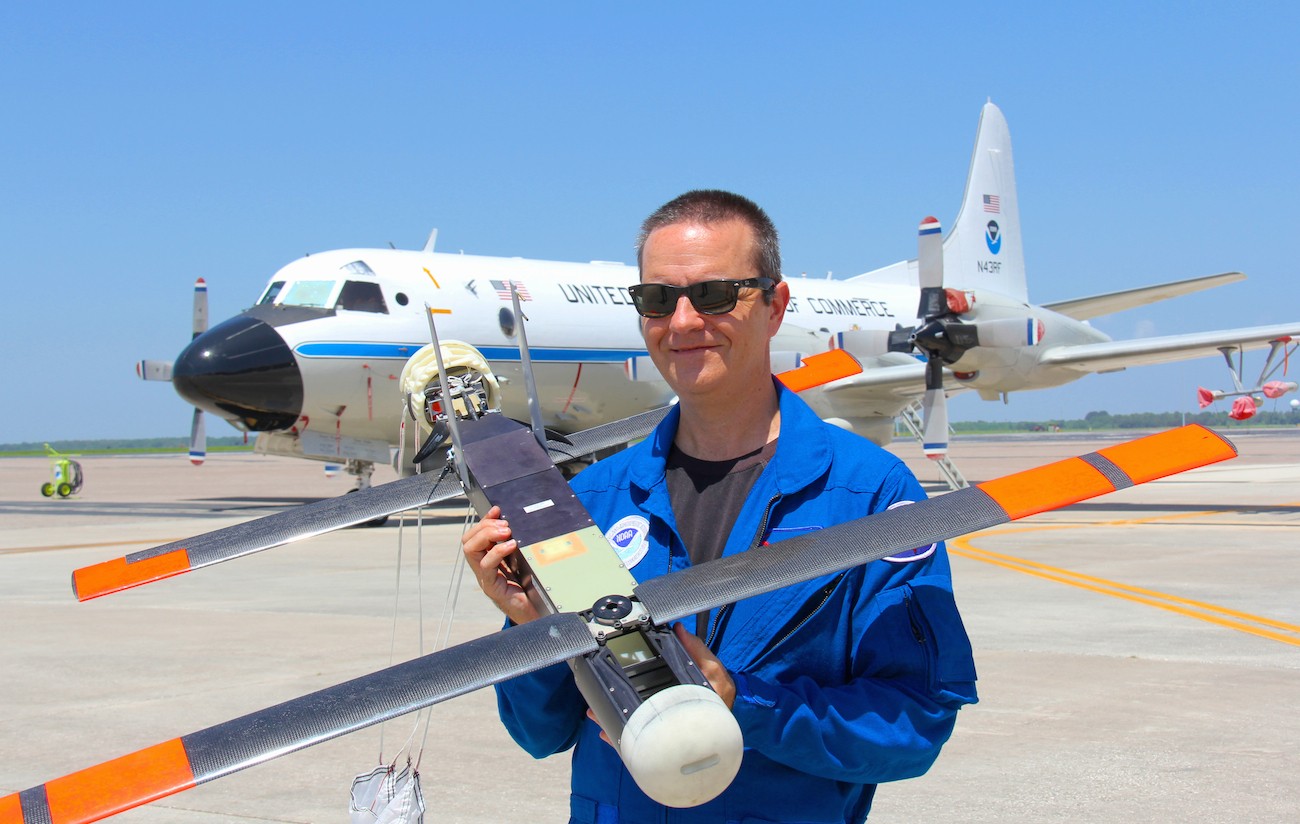NOAA AOML scientists attended the Aviation Week and Science Technology Laureate Awards in Washington D.C. to receive Aviation Week magazine’s prestigious Laureate award for Dual Defense Use. The NOAA/Raytheon team was recognized for using Raytheon Coyote Unmanned Aircraft Systems (UAS) to track and model hurricanes.
Developed for the military, Coyote is a small, expendable UAS capable of flying into environments too dangerous for manned aircraft. The system can fly for more than an hour and up to 50 miles from its host aircraft. Coyote was first deployed by NOAA in 2014, when hurricane scientists launched four of the UASs into Hurricane Edouard.

In September 2017, as Hurricane Maria intensified in the Caribbean, scientists aboard NOAA’s P3 Orion Hurricane Hunter aircraft launched six Coyote UAS directly into Maria’s eyewall, the ring of clouds around the eye of the storm where the weather is most severe. These experimental research missions gave researchers an unprecedented view of Maria. The data from these missions were transmitted in real time from the Coyote to operators aboard the P3, as well as to NOAA’s National Hurricane Center, where observations were used as part of the forecast discussion.
“We think unmanned technologies that explore dangerous and difficult to observe regions of the storm may improve our physical understanding, provide enhanced situational awareness and may ultimately improve the accuracy of hurricane intensity forecasts in the future,” said Dr. Joe Cione, NOAA/AOML hurricane researcher and principle investigator of NOAA’s Coyote project. “The Coyotes we deployed in Hurricane Maria collected critical, continuous observations in the lower part of the hurricane, an area impossible to reach with manned aircraft.”

The Coyotes launched into Hurricane Maria made several notable achievements in hurricane flights performed by small UAS. The first Coyote sustained record flight duration for an eyewall mission of 43 minutes, maintaining a controlled flight as low as 400 feet and recording maximum wind speed at 123 miles per hour. Another recorded wind speeds of 143 miles per hour, the highest winds ever measured by a Coyote. During the second Coyote flight, in addition to gathering data on atmospheric pressure, temperature and moisture, the Coyote also collected ocean temperatures for the first time.
“Raytheon technology is enabling hurricane hunters to better understand storm behavior. Our Coyotes are delivering vital information that may ultimately improve hurricane models, which can help save lives,” said Dr. Thomas Bussing, Raytheon vice president of Advanced Missile Systems.
Originally Published March 2018 by Sierra Sarkis
